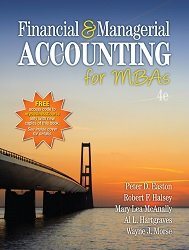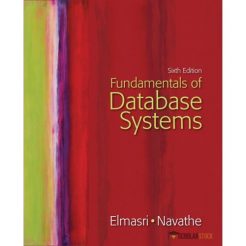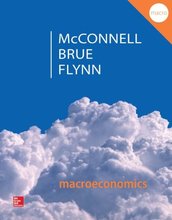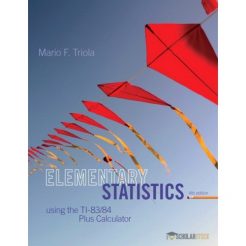Description
Financial & Managerial Accounting for MBAs
Financial & Managerial Accounting for MBAs Easton
Financial & Managerial Accounting for MBAs Easton 4th
Financial & Managerial Accounting for MBAs Easton 4th Test Bank
Test Bank for Financial & Managerial Accounting for MBAs 4th Edition Easton
***THIS IS NOT THE ACTUAL BOOK. YOU ARE BUYING the Test Bank in e-version of the following book***
Name: Financial & Managerial Accounting for MBAs
Author: Easton
Edition: 4th
ISBN-10: 1618531026
ISBN-13: 978-1618531025
Type: Test Bank
Module 3
Accounting Adjustments and Constructing Financial Statements
| Learning Objectives – coverage by question | |||||
| True/False | Multiple Choice | Exercises | Problems | Essays | |
| LO1 – Analyze and record transactions using the financial statement effects template. | 1-6 | 1-8 | 1-4 | 1-4 | 1 |
| LO2 – Prepare and explain accounting adjustments and their financial statement effects. | 7-12 | 9-16 | 4-9 | 1, 2, 5 | 1, 2 |
| LO3 – Explain and construct the trial balance. | 13 | 17-19 | 10 | 6 | 1, 3 |
| LO4 – Construct financial statements from the trial balance. | – | 20, 21 | 11-13 | 6-8 | 1, 4 |
| LO5 – Describe the closing process | 14,15 | 22-25 | 5, 14 | 9, 10 | 1, 5 |
Module 3: Accounting Adjustments and Constructing Financial Statements
True/False
Topic: Financial Statement Effects Template
LO: 1
- The financial statement effects template captures the effects of transactions on all four financial statements.
Answer: True
Rationale: The balance sheet accounts are all on the left side of the template and the income statement accounts on the right. In addition, the cash column provides the statement of cash flows, and the two equity columns can be used to construct the statement of shareholders’ equity.
Topic: Journal Entries
LO: 1
- Assets, expenses and dividends increase with debits.
Answer: True
Rationale:Assets increase with debits and equity decreases with debits. Therefore, expenses and dividends decrease equity – they are debits.
Topic: Journal Entries
LO: 1
- Increases are recorded on the left side of asset T-accounts and on the right side of liability T-accounts.
Answer: True
Rationale:Debits increase assets and credits increase liabilities.
Topic: Financial Statement Effects of Transactions
LO: 1
- When shareholders contribute capital to a company, earned capital increases because the company has earned the shareholders’ trust and their investments.
Answer: False
Rationale:When shareholders contribute capital to a company, contributed, not earned, capital increases.
Topic: Financial Statement Effects of Transactions
LO: 1
- Revenues and expenses affect the income statement but not the balance sheet.
Answer: False
Rationale:Revenue and expense recognition increases retained earnings on the balance sheet.
Topic: Financial Statement Effects of Transactions
LO: 1
- Revenue is typically recorded as earned when cash is received because that is when the company can measure the revenue objectively.
Answer: False
Rationale: Revenue is recorded when it is earned regardless of when cash is received.
Topic: Financial Statement Effects of Transactions
LO: 2
- Expenses that are paid in advance are held on the balance sheet until the end of the accounting period when they are transferred to the income statement with accounting adjustments.
Answer: False
Rationale: Expenses paid in advance include prepaid insurance, inventory and fixed assets. All of these items end up on the income statement when they are used up, not necessarily at the end of the accounting period.
Topic: Accrual Accounting
LO: 2
- Accrual accounting recognizes revenues only when cash is received and expenses only when cash is paid.
Answer: False
Rationale: Accrual accounting refers to the recognition of revenue when earned and the matching of expenses when incurred. The recognition of revenues and expenses does not, necessarily, relate to the receipt or payment of cash.
Topic: Accrual Accounting
LO: 2
- The journal entry for recording sales revenue that has been earned is to debit accounts receivable if cash will be received later, or debit unearned revenue if cash was received in advance.
Answer: True
Rationale: If cash is received later, the debit is to accounts receivable. If the cash is received before revenue is earned then the appropriate debit is to unearned revenue.
Topic: Accounting Adjustments
LO: 2
- The journal entry for recording cost of sales is to debit cost of sales expense and credit the inventory account.
Answer: True
Rationale: The journal entry for recording cost of sales is to debit cost of sales expense and credit inventory. When the cash is paid for the inventory does not affect the expense.
Topic: Accounting Adjustments
LO: 2
- Accounting scandals can happen when managers abuse the accounting adjustment process.
Answer:True
Rationale: Accounting scandals can result from improperly recorded transactions or with improper accounting adjustments. However, even if managers abuse the adjustment process, it is not the case that a scandal always ensues.
Topic: Accounting Adjustments
LO: 2
- Companies make adjustments to more accurately reflect items on the income statement and the balance sheet.
Answer: True
Rationale:Adjustments ensure that performance and position are accurately portrayed in the financial statements.
Topic: Trial Balance
LO: 3
- Companies typically prepare two trial balances – one after recording all the transactions and one after recording all the accounting adjustments.
Answer: True
Rationale:An unadjusted and an adjusted trial balance are both part of the accounting cycle.
Topic: Closing Accounts
LO: 5
- A company closes all of its accounts in order to zero out the balances so that next period starts with a fresh slate.
Answer: False
Rationale:A company closes its temporary accounts only. Balance sheet accounts are never closed out – they have cumulative balances.
Topic: Closing Accounts
LO: 5
- To close revenue accounts, a company must debit Retained Earnings because Revenue has a credit balance and debits must equal credits.
Answer: False
Rationale: Revenue does have a credit balance. Therefore, to close Revenue, the company debits Revenue and credits Retained earnings.
Multiple Choice
Topic:Financial Statement Effects – Sales on Account
LO: 1
- Sales on account would produce what effect on the balance sheet?
- Increase Revenue
- Increase noncash assets (Accounts receivable)
- Decrease noncash assets (Inventory)
- A and B
- A, B and C
Answer:B
Rationale: Revenue is not on the balance sheet (answer A is incorrect). Inventory is not always decreased – think of service revenue (answer C is incorrect).
Topic:Financial Statement Effects – Collection of a Receivable
LO: 1
- Cash collected on accounts receivable would produce what effect on the balance sheet?
- Increase liabilities and decrease equity
- Decrease liabilities and increase equity
- Increase assets and decrease assets
- Decrease assets and decrease liabilities
- None of the above
Answer: C
Rationale: Cash collected on accounts receivable produces an increase in cash and a decrease in accounts receivable, both asset accounts. There is no impact on profit and on equity.
Topic: Financial Statement Effects – Inventory Purchase
LO: 1
- How would a purchase $400 of inventory on credit affect the income statement?
- It would increase liabilities by $400.
- It would decrease liabilities by $400.
- It would increase noncash assets by $400.
- Both A and C
- None of the above
Answer:E
Rationale: There is no income statement effect of an inventory purchase.
Topic: Financial Statement Effects – Inventory Purchase
LO: 1
- During fiscal 2013, Shoe Productions recorded inventory purchases on credit of $537.8 million. The financial statement effect of these purchase transactions would be to:
- Increase liabilities (Accounts payable) by $537.8 million
- Decrease cash by $537.8 million
- Increase expenses (Cost of goods sold) by $537.8 million
- Decrease noncash assets (Inventory) by $537.8 million
- Both A and D
Answer:A
Rationale:Credit purchases do not involve cash or expenses (B and C are incorrect). Noncash assets increase not decrease (D is incorrect).
Topic:Financial Statement Effects – Cost of Goods Sold (Numerical calculation required)
LO: 1
- During fiscal 2013, Shoe Productions recorded inventory purchases on credit of $537.8 million. Inventory at the start of the year was $58.2 million and at the end of the year was $73.0 million.
Which of the following describes how these transactions would be entered on the financial statement effects template?
- Increase liabilities (Accounts payable) by $523.0 million
- Increase expenses (Cost of goods sold) by $537.8million
- Increase expenses (Cost of goods sold) by $523.0 million
- Increase noncash assets (Inventory) by $14.8 million
- Both A and C
Answer:C
Rationale: Cost of goods sold is purchases less the increase in inventory = $523.0 (C is correct) Liabilities increase by $537.8 when the inventory was purchased (not $523.0) so A is incorrect. Inventory increases during the year by $14.8million but not because of a transaction being entered (D is incorrect).
Topic:Financial Statement Effects – Accounts Receivable Collection
LO: 1
- During fiscal 2013, Plastics and Synthetic Resins Company recorded cash of $61,800 million from customers for accounts receivable collections. Which of the following financial statement effects template entries captures this transaction?
| Balance Sheet | Income Statement | |||||||||||||
| Transaction | Cash Asset | + | Noncash Assets | = | Liabil-ities | + | Contrib. Capital | + | EarnedCapital | Rev-enues | – | Expen-ses | = | NetIncome |
| A) | +61,800 | = | +61,800(Retained Earnings) | +61,800 | – | = | +61,800 | |||||||
| B) | +61,800 | -61,800(AR) | = | – | = | |||||||||
| C) | +61,800(AR) | = | +61,800(Retained Earnings) | +61,800 | – | = | +61,800 | |||||||
| D) | -61,800 | +61,800(AR) | = | |||||||||||
Answer:B
Rationale:Collecting cash from customers increases cash and decreases accounts receivable. There is no income statement effect.







Reviews
There are no reviews yet.